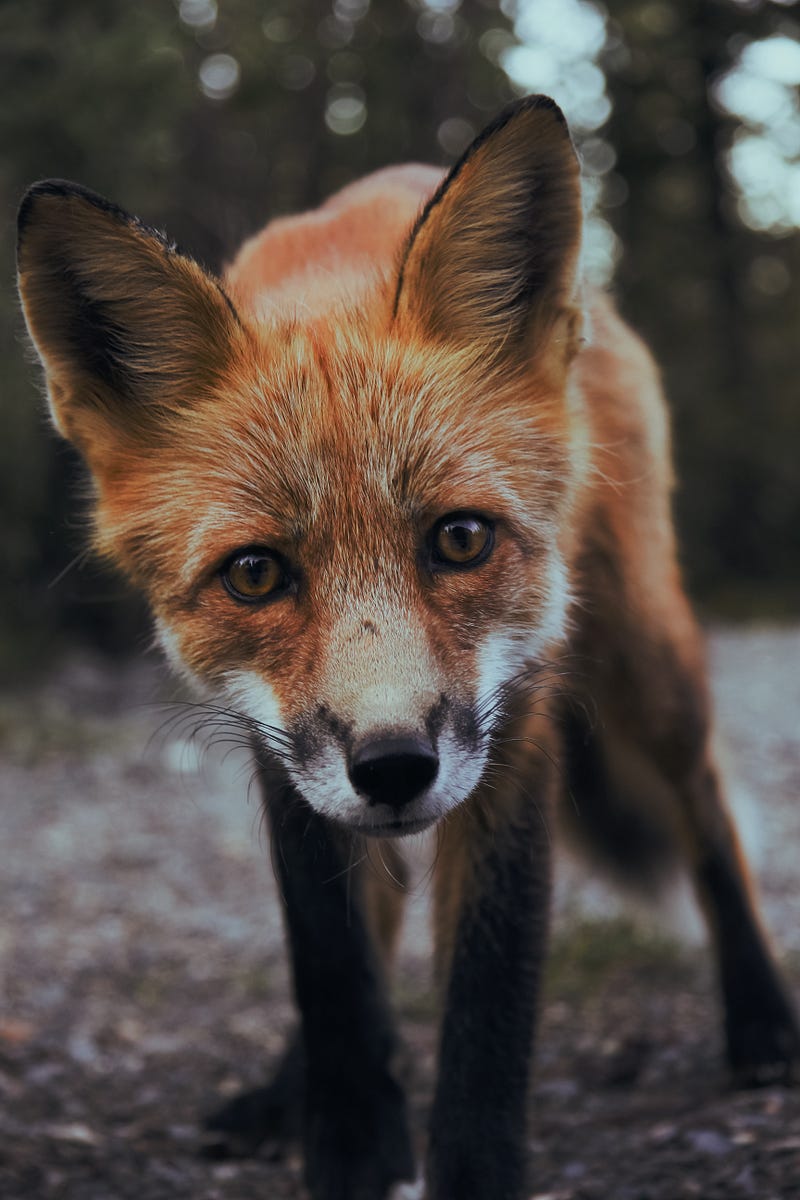# How You Can Contribute to the Protection of U.S. Wildlife
Written on
Chapter 1: Understanding the Wildlife Crisis
Did you know that approximately one-third of native wildlife in the United States faces the threat of extinction? According to various state wildlife agencies, over 12,000 species require protection, including the Monarch Butterfly, Sierra Nevada Red Fox, and Blanding’s Turtle.
HERE'S THE BRIGHT SIDE: Recently, the U.S. House of Representatives passed the Recovering America’s Wildlife Act (RAWA). If this legislation is approved by the Senate and receives presidential assent, it will allocate around $1.3 billion annually to U.S. states, territories, and Tribal nations for the protection of endangered and at-risk species, encompassing animals, invertebrates (like butterflies), fish, and plants. Importantly, this funding is supplemental and will not replace existing financial resources.
What about the Endangered Species Act (ESA)? This landmark law, enacted in 1973, remains in effect, but it has significant limitations: It suffers from chronic underfunding, leading to many eligible species languishing on a waitlist for years; when a species finally receives protection, it may be on the verge of extinction; and, due to its reliance on federal actions, industries such as logging and agriculture often lobby against species being listed as endangered.
Senator Heinrich of New Mexico, a co-sponsor of RAWA, likens the Act to “investing in primary care instead of waiting for an emergency room visit,” as reported by The Washington Post.
HOW THE FUNDS WILL BE DISTRIBUTED: According to the current draft of RAWA (S. 2372), funding will be allocated based on each state’s population, geographic size, and the number of species at risk. Each state will receive at least 1% and no more than 5% of the total available funds. Additionally, RAWA mandates that at least 15% of each state’s allocation must be spent specifically on threatened or endangered species. This represents a significant shift for tribes, who have previously received no federal funding for wildlife protection, even though they manage over 130 million acres of land in the U.S., as noted by the Native American Fish and Wildlife Society.

Chapter 2: Current Wildlife Funding Landscape
At present, a substantial portion (80%) of funding for wildlife comes from hunting and fishing licenses, as well as taxes on firearms, ammunition, and archery gear. This funding model was established in 1937 through the Pittman-Robertson Act, based on the premise that hunters and anglers are the primary users of wildlife and thus should fund its conservation.
RAWA proposes to amend the Pittman-Robertson Act to introduce additional funding. However, relying exclusively on hunting and fishing revenues presents several challenges:
- The popularity of these activities has been in decline since the 1960s. In 1960, nearly 8% of the U.S. population engaged in hunting, but by 2020, this figure had dropped to about 4.6%. Fishing has also seen a decrease, though not as steep.
- The reliance on license sales places state wildlife agencies in a difficult position where they must promote hunting and fishing to boost revenue. This has led to the term “3R promotions,” aimed at recruiting, retaining, and reactivating hunters and anglers.
- A significant number of individuals serving on state wildlife boards are hunters, fishers, or come from agricultural backgrounds, which skews priorities away from non-hunted animals and fish.
Strange Bedfellows in Conservation
As Shakespeare noted, “Misery acquaints a man with strange bedfellows.” This idea can be seen in the context of RAWA, which has garnered support from both hunting and fishing organizations (such as Ducks Unlimited and Pheasants Forever) and pro-animal welfare groups (like the National Wildlife Federation and Nature Conservancy). This bipartisan backing includes endorsements from the Congressional Sportsman’s Caucus, with 16 Republican Senators co-sponsoring the Act. While co-sponsorship doesn’t guarantee a vote in favor, it’s a positive sign.
If RAWA becomes law, it will channel funds directly to state agencies that already have lists of endangered species. To qualify for RAWA funds, states must match 25% of the federal allocation.
The first video, Protecting Wildlife: You Can Help!, provides insights on how individuals can actively participate in wildlife conservation efforts and make a difference in their communities.
Chapter 3: Taking Action
How can you make a difference? One effective way is to email your Senators to advocate for RAWA. It’s a straightforward process that allows you to express your support for wildlife and environmental issues. Here’s how:
- If you’re unsure of your Senators' names, simply search “who is my Senator?” along with your state.
- Click on the “contact” link below their photos to share your opinion.
- Fill in your name and contact information, ensuring they know you’re a constituent.
- Choose a topic—“animals” or “environment” works well—and write a message supporting RAWA (S. 2372).
Regardless of your state’s political leaning, your voice is crucial.
Fun Fact: If you’ve never engaged in environmental advocacy before, sending this email marks your first step! Plus, you can impress friends by sharing that you contacted your Senator about important legislation. Once you’ve done it once, you’ll have the knowledge to reach out again on future issues!
Consider sharing this information with friends or family who care about the environment, whether they are bird watchers, nature lovers, or outdoor enthusiasts.
For further reading, check out Benji Jones’s insightful article in Vox, published on August 8, 2022.
The second video, When We Save Wildlife, We Save Ourselves | Collin O'Mara | TEDxNashville, discusses the interconnectedness of wildlife conservation and human well-being, emphasizing the importance of protecting our natural environment.
In conclusion, your involvement in wildlife advocacy can lead to meaningful change. Don’t hesitate to make your voice heard!
Sources referenced in this article include the Alliance for America’s Fish & Wildlife, Ducks Unlimited, and the National Wildlife Federation among others.